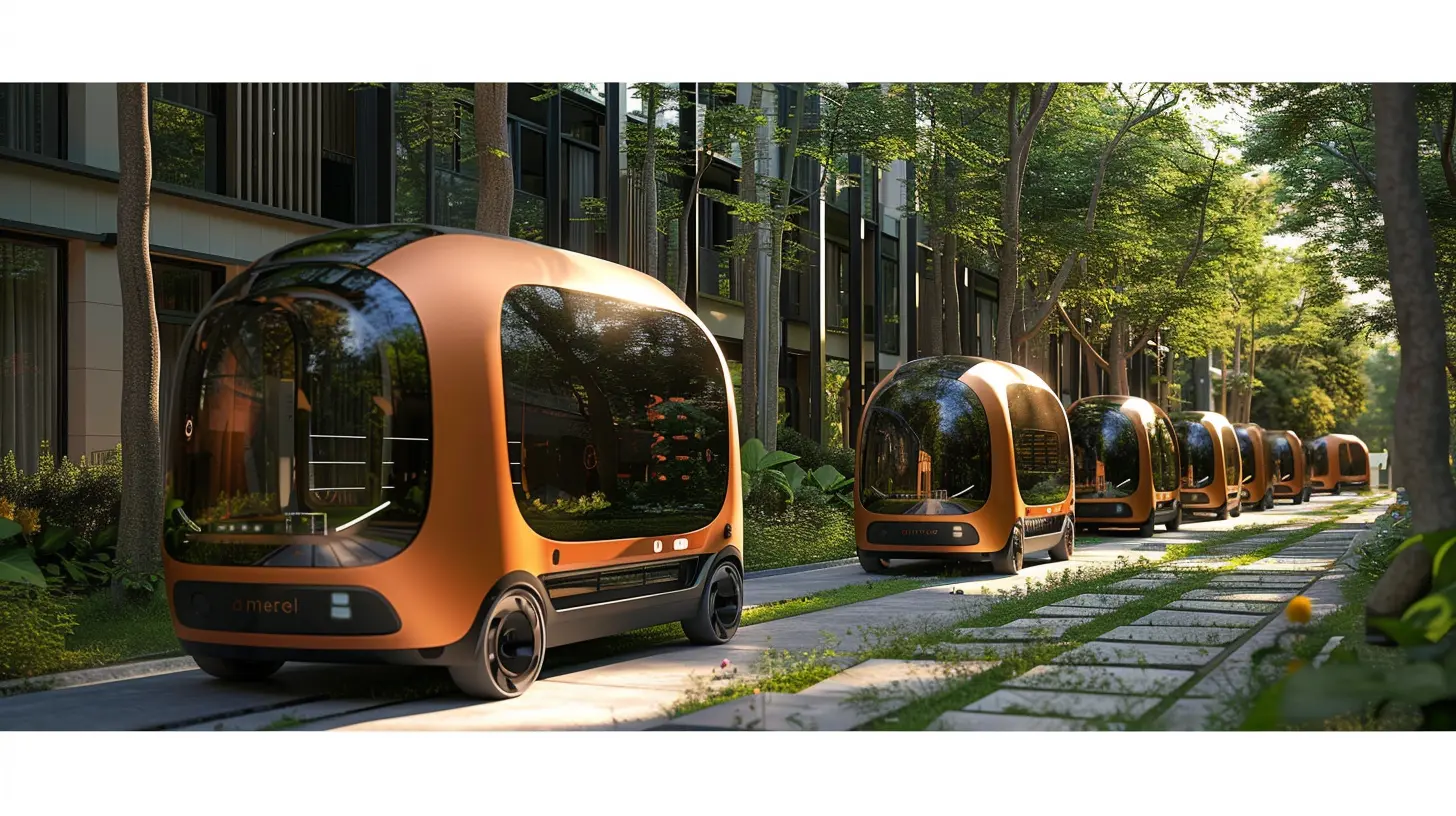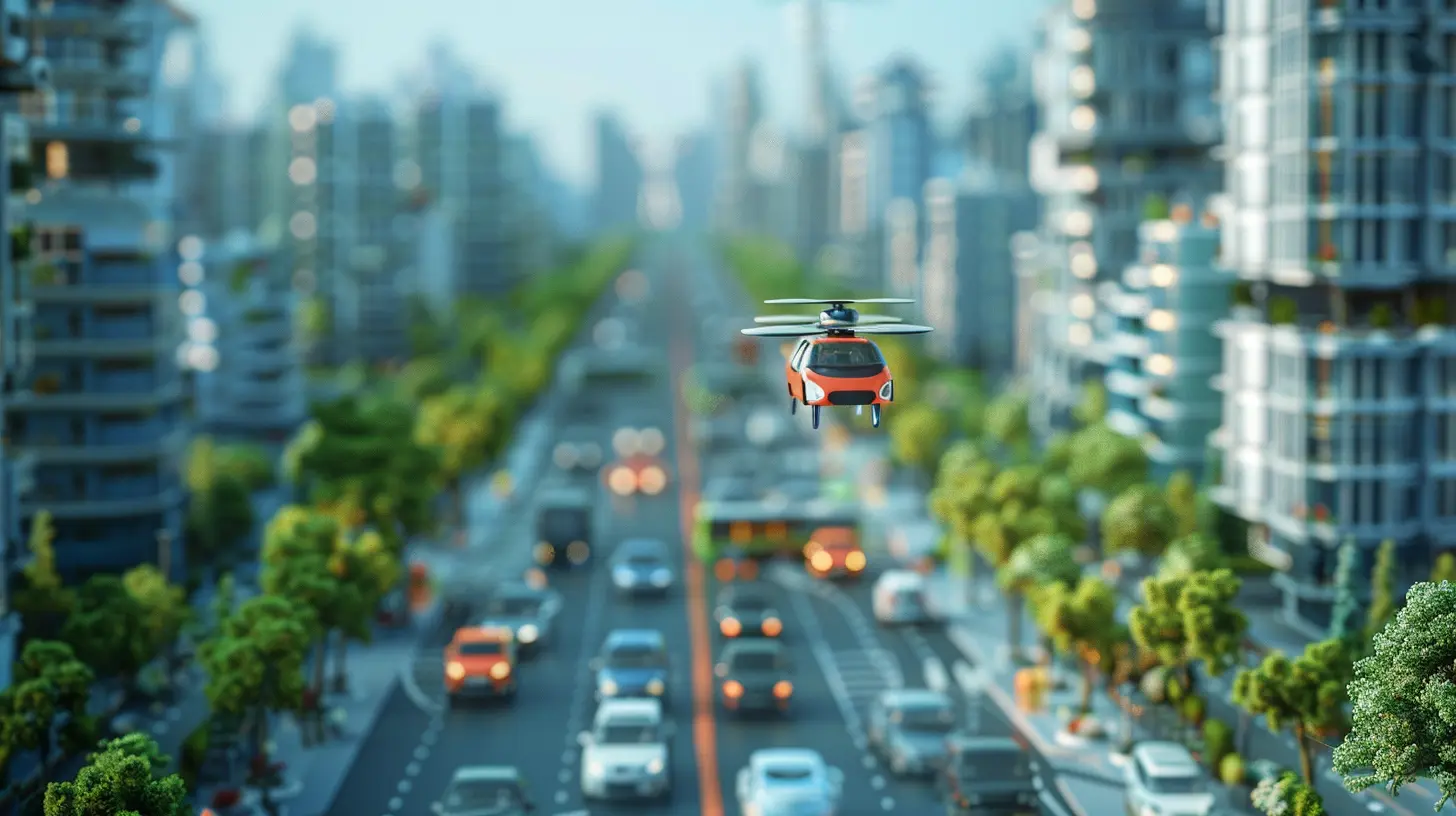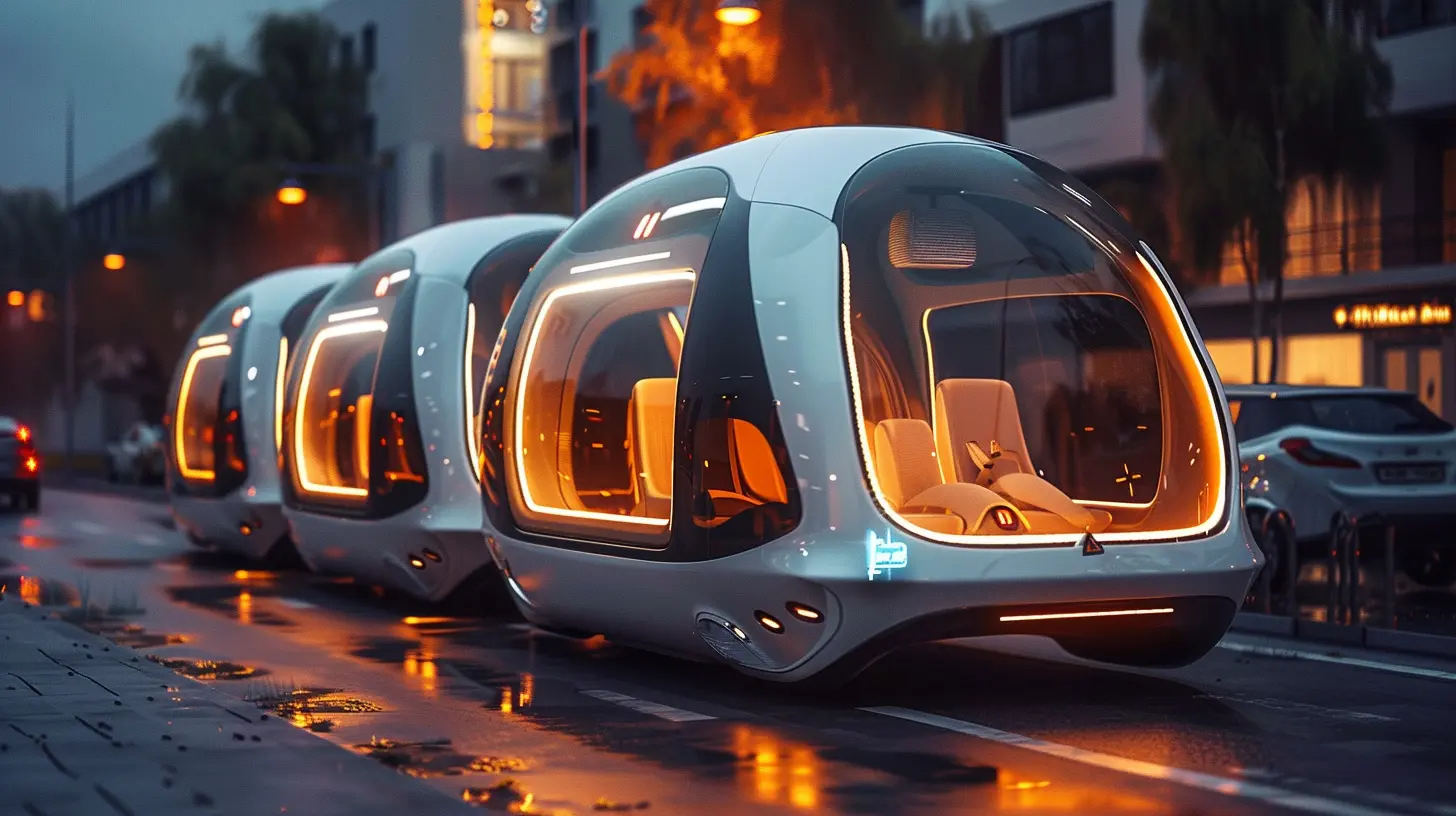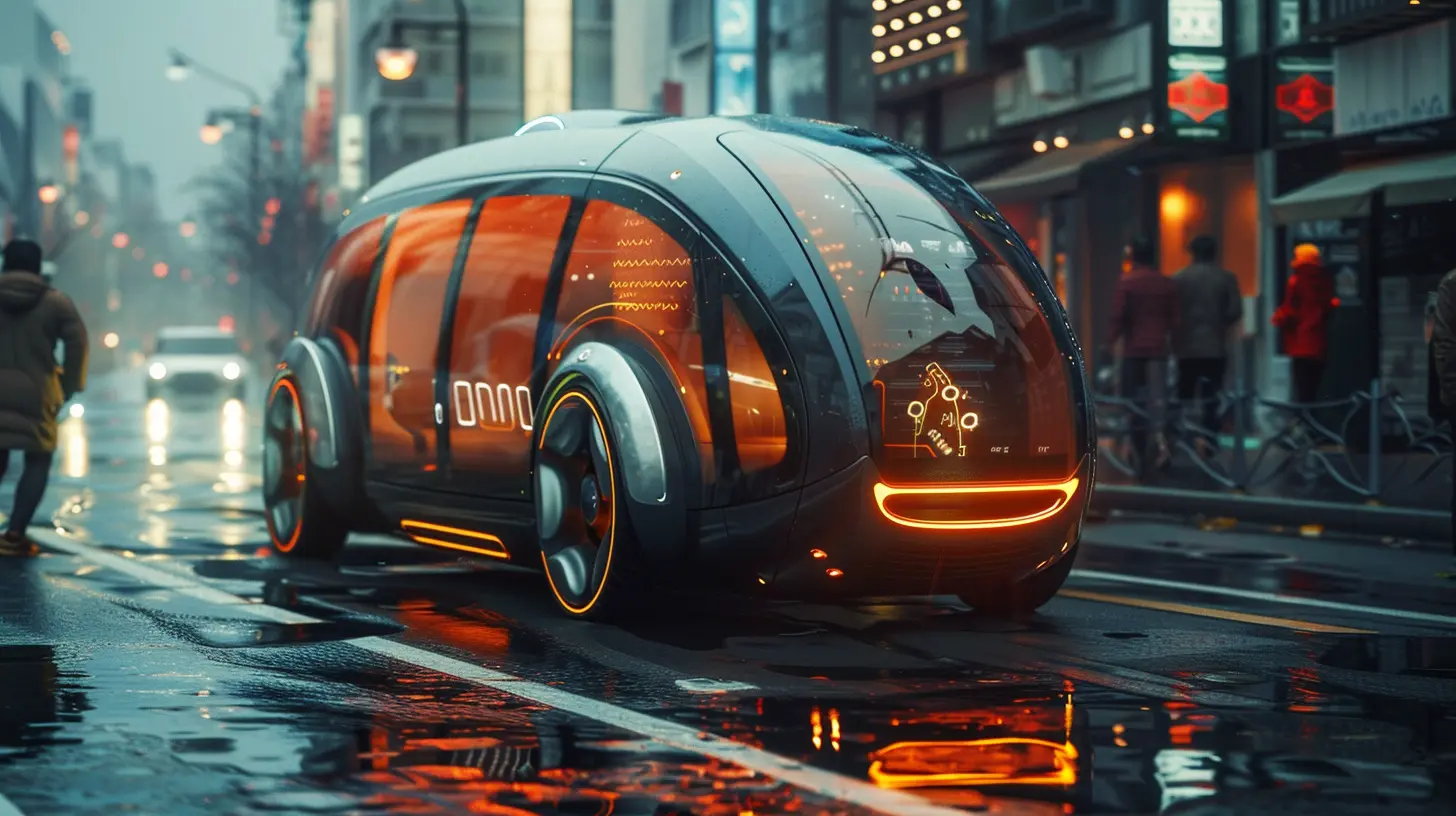How Autonomous Vehicles Could Impact Real Estate and Urban Planning
16 October 2025
Imagine a city where cars drive themselves, traffic jams are a thing of the past, and parking lots are almost non-existent. Sounds futuristic, right? Well, that future might be closer than you think. Autonomous vehicles (AVs), which are essentially self-driving cars, have been making headlines for a while now. But their impact extends far beyond just the transportation sector. They’re poised to change everything from how we design our cities to the value of your property.
So, how exactly could autonomous vehicles impact real estate and urban planning? Let’s dive into it.

The Rise of Autonomous Vehicles
Before we get into the nitty-gritty, let’s quickly revisit what autonomous vehicles are. These are cars equipped with advanced technology, like smart sensors, cameras, radar, and artificial intelligence, to navigate roads without human intervention. Companies such as Tesla, Waymo, and Uber are already testing AVs, and it's only a matter of time before they become mainstream.When that happens, the ripple effects on urban planning and real estate will be enormous. Think about how cars shape our cities today — roads, parking lots, gas stations, and garages. All these spaces and infrastructures have been designed with traditional cars in mind. But with AVs, the game changes entirely.

Less Need for Parking Spaces
Let’s start with one of the most obvious changes: parking. Right now, cities dedicate a huge amount of space to parking. From large parking structures to street parking, it's estimated that around 30% of urban land is used for parking in some cities. That’s a staggering amount of space, isn’t it?Autonomous vehicles, however, won’t need to park near your destination. Instead, they could drop you off and then head to a remote parking area, or even continue serving other passengers. This means urban planners could repurpose these massive parking lots for alternative uses. Imagine turning that ugly multi-story parking garage into a park, a shopping center, or even affordable housing. The possibilities are endless!
In suburban areas, where homes often come with garages and driveways, the need for personal parking may diminish. People might prefer to summon a driverless car on demand rather than owning one. This could lead to a redesign of suburban homes, with garages being converted into extra living spaces or home offices.
What Could Replace Parking Lots?
If you’re wondering what we could do with all that freed-up parking space, the options are exciting. City planners could prioritize more pedestrian-friendly areas, green spaces, or even smart urban developments. We could see an increase in mixed-use developments, where housing, retail, and community spaces are integrated, creating more vibrant and livable neighborhoods.
Reduced Traffic Congestion
Let’s be honest — traffic jams are the bane of city life. We spend hours stuck in traffic, honking at the guy in front, and trying to switch lanes. But with autonomous vehicles, traffic congestion could be drastically reduced. AVs are designed to communicate with one another, making real-time adjustments to optimize traffic flow. They can drive at safer distances, avoid accidents, and even reroute themselves to avoid congestion.What does this mean for urban planning? For starters, the width of roads could be reduced. Current road designs cater to human drivers who need wider lanes for safety. But AVs can drive more precisely, meaning narrower lanes could suffice. This could free up more space for bike lanes, wider sidewalks, or even dedicated lanes for electric scooters and other forms of micromobility.
Also, with fewer traffic jams, commuting time could decrease, making suburban areas more attractive to people who work in the city. This could lead to a shift in residential demand, as people may prefer to live farther from the city center if the commute becomes more manageable.

Changes in Property Values
Speaking of suburban areas, autonomous vehicles could have a significant impact on property values. Right now, properties closer to city centers tend to be more expensive because of their proximity to work, amenities, and public transportation. But what if commuting wasn’t such a hassle anymore? If AVs can reduce travel time and make the commute more comfortable — imagine working or even sleeping during your ride — people might be more willing to live farther away from the city.This could lead to a rise in property values in suburban and rural areas, as people seek larger homes and quieter neighborhoods without the burden of a long, stressful commute. On the flip side, properties in the city center might see less demand, especially if parking becomes less of a concern and people don’t mind living farther away.
A Shift in Commercial Real Estate
It’s not just residential real estate that’s going to feel the impact. Commercial real estate might also see changes. Retail spaces, for example, might not need to be as close to public transportation or parking lots. With AVs, people could easily access retail outlets that are located farther away, potentially leading to the development of more remote shopping centers or entertainment hubs.Additionally, businesses could rethink their office locations. If employees can easily commute from suburban areas or even remote towns thanks to AVs, companies might not need to pay the premium to be located in city centers. This could lead to a decentralization of business districts.
Rethinking Public Transportation
Let’s not forget about public transportation. Autonomous vehicles could either complement or compete with traditional forms of public transit. On one hand, AVs could serve as a more flexible option for people who don’t want to adhere to a fixed bus or train schedule. On the other hand, cities might incorporate AVs into their public transportation systems, offering shared autonomous shuttles or buses that can navigate through neighborhoods more efficiently.This could reduce the need for large bus terminals or even train stations. Instead, cities could develop more localized transit hubs where people can quickly hop onto an AV to get to their destination. This shift could also encourage denser, more walkable neighborhoods, as public transportation becomes more accessible and convenient.
Environmental and Sustainability Benefits
As cities evolve with AV technology, there’s also the potential for significant environmental benefits. Autonomous vehicles are expected to be more energy-efficient than traditional cars, especially if they are electric. Fewer traffic jams mean less idling and, consequently, lower emissions.Urban planning could incorporate more eco-friendly designs, with the extra space (formerly occupied by parking lots and wide roads) being used for green infrastructure like parks, bike paths, and community gardens. Additionally, a reduction in personal car ownership could lead to fewer cars on the road overall, which would mean less air pollution and a smaller carbon footprint for cities.
Autonomous Freight and Its Impact on Logistics
It’s not just personal vehicles that are going autonomous. Freight and delivery services are also looking at driverless technology. Autonomous trucks could revolutionize the logistics industry, making deliveries faster and more efficient. This could have a ripple effect on urban design and real estate as well.For instance, with more efficient delivery systems, retail and commercial spaces might not need as much storage space for inventory. Warehouses could be located farther from city centers, as AVs could handle long-distance deliveries without the need for human drivers. This could free up valuable urban real estate for other purposes, such as residential or recreational development.
New Challenges for Urban Planners
Of course, with every technological advancement comes new challenges. Urban planners will need to grapple with how to integrate autonomous vehicles into existing infrastructure. For instance, what happens to all the people who still drive manual cars? How will AVs interact with pedestrians, cyclists, and other forms of transportation?There are also concerns about increased vehicle miles traveled (VMT). If AVs make commuting easier and more comfortable, people might end up traveling more, which could lead to more urban sprawl and potentially negate some of the environmental benefits.
Additionally, cities will need to think about how to regulate autonomous vehicles. Will there be designated lanes? How will traffic laws change? And how do we ensure that AV technology is accessible to everyone, not just the wealthy?
Conclusion: A New Era for Real Estate and Urban Planning
Autonomous vehicles are on the verge of transforming not just how we travel, but how we live and work. From repurposing parking lots to changing property values and reducing traffic congestion, the impact of AVs on real estate and urban planning will be profound.While there are still many questions to be answered, one thing is clear: urban planners and real estate developers will need to adapt to this new reality. The cities of the future will likely be greener, more efficient, and more human-centric, thanks to the rise of autonomous vehicles.
So, the next time you see a self-driving car cruising down the street, remember — it’s not just the roads that are changing. Our entire urban landscape is about to get a major upgrade.
all images in this post were generated using AI tools
Category:
Autonomous VehiclesAuthor:

John Peterson
Discussion
rate this article
1 comments
Maisie Navarro
Autonomous vehicles hold the potential to transform urban landscapes and real estate dynamics significantly. By reshaping transportation patterns and reducing parking needs, they may encourage more sustainable development and improve accessibility, ultimately paving the way for smarter, more efficient cities that prioritize community well-being.
October 23, 2025 at 4:56 AM

John Peterson
Thank you for your insightful comment! Indeed, the rise of autonomous vehicles could revolutionize urban planning, fostering sustainable development and enhancing community accessibility.


